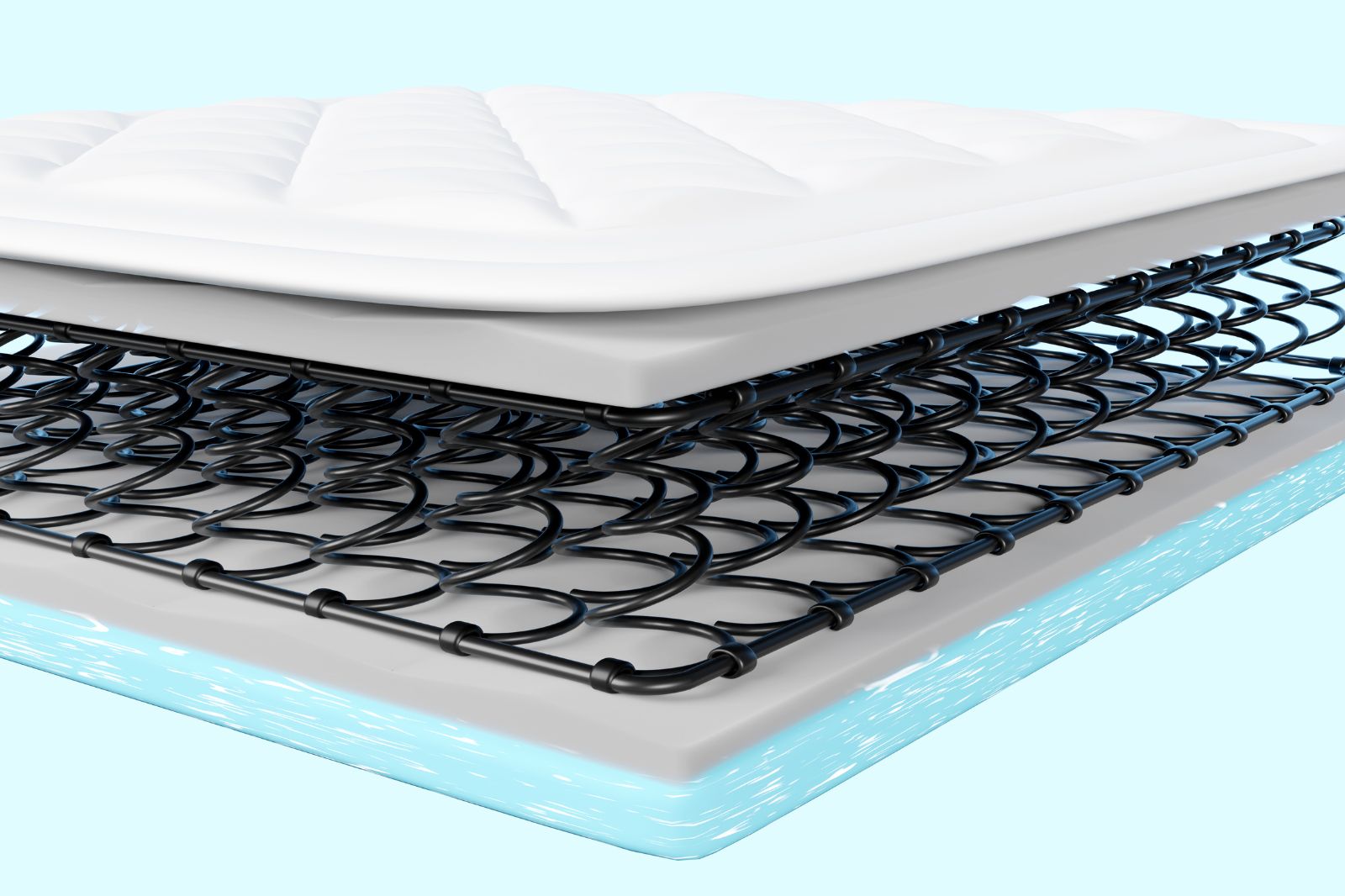What Are Mattresses Made of? A Guide to Mattress Types

Choosing the right mattress is crucial in achieving a good night’s sleep. They’re quite the investment, in that they can be several thousands of dollars (or at least a couple hundred). With so many options available, it can be overwhelming to know where to start. But before learning about different kinds of mattresses, it’s a good idea to imagine what kind of feeling you’re looking for (firm, medium-firm, plush) and what kind of sleeper you are (back, stomach, or side-sleeper). This will help narrow down your choices. In this blog, we will introduce various types of mattresses and their components so you can make an informed decision for your sleep health.
Innerspring Mattresses
Materials: Innerspring mattresses are among the most traditional and widely used types of mattresses. They are primarily made of steel coils or springs that provide support and structure. These coils can vary in type, including:
- Bonnell Coils: The oldest and most common type. They’re shaped like hourglasses and interconnected to provide uniform support.
- Offset Coils: Similar to Bonnell coils but with a more flexible design for better contouring and support.
- Continuous Coils: Made from a single wire that is formed into interconnected coils.
- Pocketed Coils: Individually wrapped coils that move independently. This reduces motion transfer and provides targeted support.
Comfort Layers: Innerspring mattresses usually feature comfort layers on top of the coil system made of materials like foam, cotton, or wool.
Pros and Cons: Innerspring mattresses offer excellent support and are often more affordable. They tend to be cooler due to better airflow through the coils. However, they may not provide the best motion isolation or pressure relief compared to other mattress types. They also may make squeaky noises when you move around if they’re old.
Memory Foam Mattresses
Materials: Memory foam mattresses are made from viscoelastic foam that conforms to the shape of your body. This material was originally developed by NASA and is known for its ability to absorb pressure and reduce motion transfer.
Layers: Memory foam mattresses typically consist of several layers:
- Comfort Layer: The top layer is made of memory foam, which conforms to your body’s shape.
- Support Layer: Below the comfort layer, a denser foam layer or base provides overall support.
Pros and Cons: Memory foam mattresses provide contouring and pressure relief. It’s a great choice for those with joint or back pain. They also offer excellent motion isolation, so you won’t disturb your partner when you move around at night. One con to note is that memory foam can retain heat. For those who sleep hot, this can be an issue. Thankfully, there are certain mattresses with cooling gel technology included in the top layer. Memory foam mattresses may also have a distinct “new” smell when you first unpack it, but it goes away after a while.
Latex Mattresses
Materials: Latex mattresses are made from natural latex, the rubber-like material derived from the sap of a rubber tree, or synthetic latex.
Types:
- Dunlop Latex: Denser and firmer, often used for support layers.
- Talalay Latex: Lighter and airy, used for comfort layers due to its softer feel.
Layers: Latex mattresses typically feature layers of latex foam, with different firmness levels available to suit various preferences.
Pros and Cons: Latex mattresses are known for their durability, breathability, and natural resistance to allergens and dust mites. They offer excellent support and bounce. On the downside, they can be quite heavy and may come with a higher price tag compared to other types. They are also not meant for people with latex allergies.
Hybrid Mattresses
Materials: Hybrid mattresses combine elements from both innerspring and foam mattresses. They feature a core of pocketed coils for support and one or more comfort layers made from foam or latex.
Layers:
- Support Core: Typically made of pocketed coils for targeted support and reduced motion transfer.
- Comfort Layers: Made from memory foam, latex, or a combination.
Pros and Cons: Hybrids offer the benefits of both innerspring and foam mattresses, including good support, pressure relief, and reduced motion transfer. They also tend to be more breathable than all-foam mattresses. However, they can be more expensive and may not be as durable compared to high-quality foam or latex mattresses.
Conclusion
Understanding the materials and construction of different mattress types is essential for making an informed decision for your sleep. Whether you prefer the traditional support of an innerspring mattress or the combined features of a hybrid, each type has its own set of advantages and considerations. By considering your personal preferences, sleep needs, and budget, you can choose a mattress that will help you achieve a restful and rejuvenating night’s sleep.
Why Trust Us?
At The Sleeping Institute, we're dedicated to transparency, impartiality, and accuracy in every article we publish. Our reviews are based on comprehensive analysis and firsthand experience. Staying current with the latest advancements in sleep technology, we offer up-to-date, reliable, and unbiased information to help you make informed decisions for a better night's rest. Let us be your trusted guide in the ever-evolving world of sleep technology!